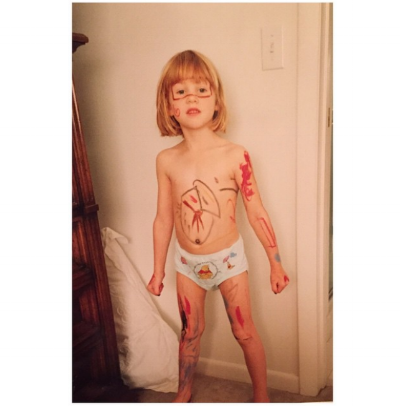I have a love-hate relationship with the phrase "fake it till you make it". I have heard it repeated by many incredible ladies, in my life and beyond, who are making things happen in a very real way. I have heard senators say it, I have heard businesswomen and teachers say it. I have even heard Gloria Steinem say it! It has become an articulated catch-all for that feeling you get when you dive into something without total confidence in the result. There is some insane statistic I heard on the Riveters Podcast, it is my favorite go listen to it because it's amazing, that women are less likely to act or make a decision unless they are 80% sure they will be successful as a result. That number is around 40% for most men. Shocking.
In reality, we are all just a bunch of bumbling bags of water making it up as we go along, however, I know a handful of women who are doing a much better job at it then they give themselves credit for. To them I say, let this be one less thing you have to fake.
Growing up alongside powerful women was challenging. When I was younger and a lot less self-aware I would always say, "I prefer hanging out with guys, girls just don't like me". Women are complex creatures with impeccable intuition, fierce competition, and usually an incredible radar for bullshit. While these can be empowering traits they can often drive a wedge between friends when not properly understood. However, I am one of the lucky ones. My best friends push me, they inspire me, they make fun of me, and I love them for it. So when one of my nearest and dearests asked me if I wanted to come on board as a director and help coordinate the first ever small press fair in Fort Lauderdale, FL I said, "I don't think I am qualified to do that...", to which she replied, "fake it till you make it!"
Ingrid Schindall is not your average female go-getter. She is an independent risk-taker who can operate on an average of four hours of sleep and whose only weakness is a hungry stomach. Her "hell yes" attitude is infectious and her storytelling skills are unmatched. In 2014 she left the safe confines of Baltimore's established printmaking community to set off on her own in South Florida, whos print scene was still in its infancy. She founded IS Projects in September 2014 as a space to not only educate the curious about the art of print and bookmaking but to serve as a pillar for growth and action in Fort Lauderdale's creative community. She is also a beautiful steamroller driving Viking goddess that I am lucky enough to call my best friend.
Small Press Fair Fort Lauderdale, appropriately referred to as SPF, serves as an opportunity for independent printers, book artists, and zinesters to come together and celebrate their independent community for the unique conglomerate it is. The fair features everything from a retail market for handmade goods to printing technique demonstrations, including the steamroller event that turns hand-carved wood blocks into monumental relief prints. This event was the brainchild of Ingrid and Sarah Michelle Rupert, the current gallery director of Girls' Club and another shining example of female poise and prowess. Between Ingrid's vast knowledge in the world of multiples and Sarah's uncanny ability to check off an entire to-do list in an afternoon, the fair was destined to be a whopping success. I was just happy to be along for the ride. (I literally get to ride the steamroller around at the end of the fair and let me tell you, it is pretty great.)
The first edition of the fair, SPF'16, was an incredible learning opportunity and while I didn't know it at the time, the experience would help solidify my decision to enter the field of marketing. I wrote my first successful grant, learned to write a press release, and helped to build a social media following from the ground up. All while having zero idea as to what I was doing. In following years the planning process has taken place alongside grad school work and I realized what a unique position I was in. Not only was I receiving hypothetical academic training on the basic functionalities of being a marketing practitioner, I was simultaneously getting to practice what I learned and apply it to a very real event. I also had the luxury of watching Sarah work her communication magic as someone who was deeply plugged into South Florida's art and community networks. As a result of all this awesomeness, the subsequent SPF'17 nearly doubled in size! By 2023 the small grassroots event outgrew its original location and extends over two days in Miami’s Mecca for the arts.
It wasn't intentional but looking around at the team of SPF's directors, coordinators, and support staff you will notice a common theme. They are women with a plan and a passion who have taught me so much. Three of my favorite lessons are...
Never take no for an answer!
You don't have to ask for permission if you are the one in charge.
Plan for the worst, hope for the best, but always be prepared to pivot.
I am honored to be a part of this team. There is nothing fake about it because ladies, we made it!



































